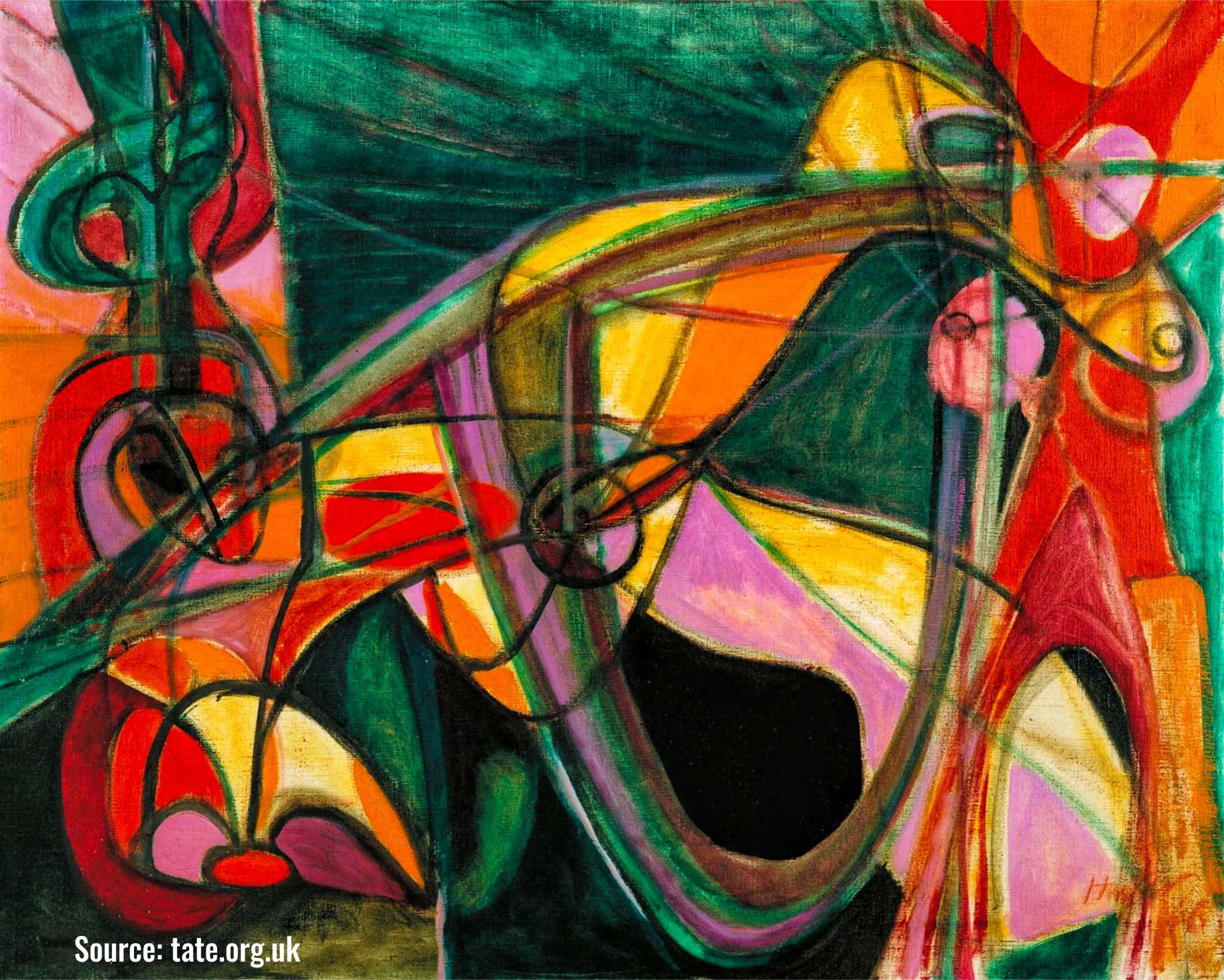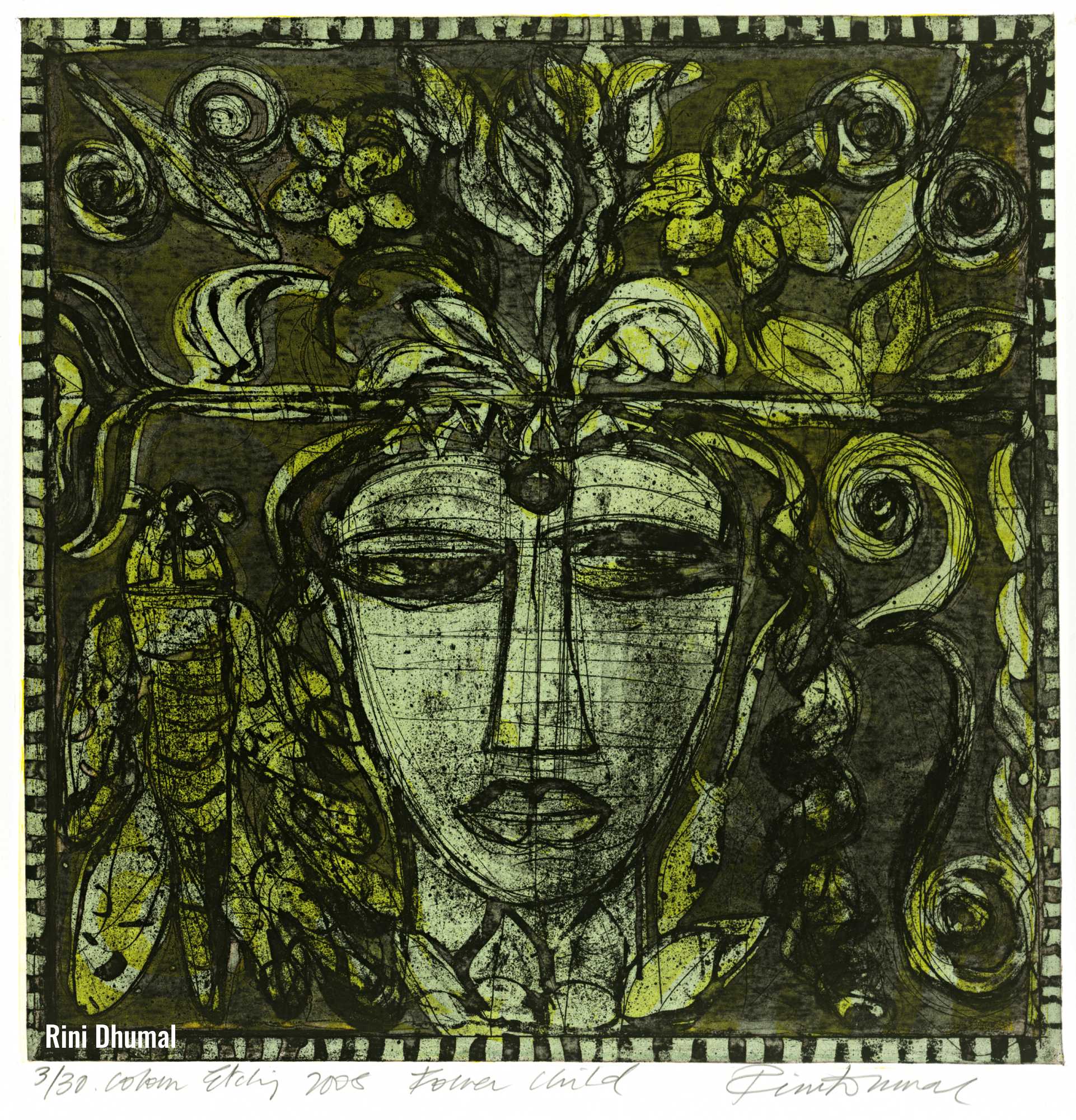
Intaglio process depends on a principal exactly opposite of the relief printing. The image to be printed is incised on a smooth and shiny surface of a thin metal sheet, usually of copper or zinc.

Image is made on it by engraving or scoring the surface with appropriate but rather exclusive tools.

Apart from the skill and experience, working directly on the hard metal plate requires muscle power to make a line or mark on the plate, as the tool is pushed away.

This has a considerable effect on the final appearance of the image. All engraved lines have very sharp edges and variations in thickness, thereby making the image look somewhat rigid.

But the image can also be created by etching it out with acid. For doing this, the surface of the plate is coated with an acid resisting ingredient –usually a mixture of wax, pine rosin and bitumen. The image can be drawn with any kind of a pointed tool on the coated surface in a manner similar to using a pen on paper.

This removes the coating only from the areas where the lines and marks are made.

When the plate is immersed in acid (diluted to required strength), it eats away only those areas where the surface is exposed. Lines can be controlled while making the drawing by using tools of various kinds and sharpness, and there after with the effect of the acid bath in terms of dilution, time and temperature.

Compared to engraving, the Images drawn and etched in this manner have fluidity and calligraphic character.

Ink is filled in the incised image on the plate. Then the surface is thoroughly cleaned but, the plate retains the ink in proportion to the depth of the lines and smoothness of various areas of its surface.

Print is pulled from it by putting a damp paper on it. Both these are then passed together between two cylindrical rollers of the printing press.

As the rollers of the press provide very heavy pressure, the paper picks up the ink from the grooves.


And, depending on the depth, lines and marks transferred from incised grooves turn up as raised ones in the print. One can actually feel this by touching the printed image. Any kind of intaglio print is also a mirror image of the one on the matrix.
Because it is possible to apply ink on the plate with a roller (brayer), there has been a further expansion in the latitude of printing in this medium. William Stanley Hayter revived and experimented with colour printing at his print studio ‘Atelier 17’ at Paris. ‘VISCOSITY’ which is relatively a new -about seven decade old – technique was invented there.

Krishna Reddy and Motiwala, two printmakers of Indian origin, have contributed considerably to its development during the initial stage.

Due to the different proportions of oil, the layers of inks with different viscosities do not get mixed with each other when overlapped. This enables a printmaker to apply different coloured inks on various levels of incised as well as the original surface of the matrix, and print it at one run of the press. Multi-coloured prints made in this manner, is a unique and most important role of ‘Viscosity’ printing.

In all other standard methods more matrices are necessary for printing two or more colours as they are printed separately. R. M. Palniappan and Rini Dhumal are among those Indian printmakers who have been using this medium.

There are several techniques (etching, aquatint, dry point, mezzotint etc.) used for making matrices for intaglio prints. Unlike most woodcut prints, intaglio prints can have minute details, subtle tonality and a large verity of textures.
Somnath Hore was among the pioneers in India who used this method in quite original way. He had also made ‘BLIND PRINTS’ in which the inkless images he printed from matrices made on cement slabs, appeared as embossed.

Laxma Gaud, and Anupam Sood are two of the other Indian printmakers who have worked extensively in this medium.
Although printed by very high tech processes and machines, the most common examples of intaglio printing we are familiar with are currency notes (printed from engraved plates). Brand names and logos etc. on plastic bags and fine designs on textiles are some times printed by the similar method known as ‘photo gravure’. Several photographers had used this during early decades of the last century for giving ‘art touch’ to their photographs. Some printmakers in western countries are using this but none in India.
Disclaimer
In this blog, I have tried to share my personal experiences and knowledge gained over the years talking to and understanding artists, collectors, buyers, students and most importantly people who don’t have much interest in art and the watercolour medium. All of them have given me a different perspective in understanding this wonderful medium. It can be a quick guide for a students, novice collector or buyer who wants to start collecting watercolour artworks.


